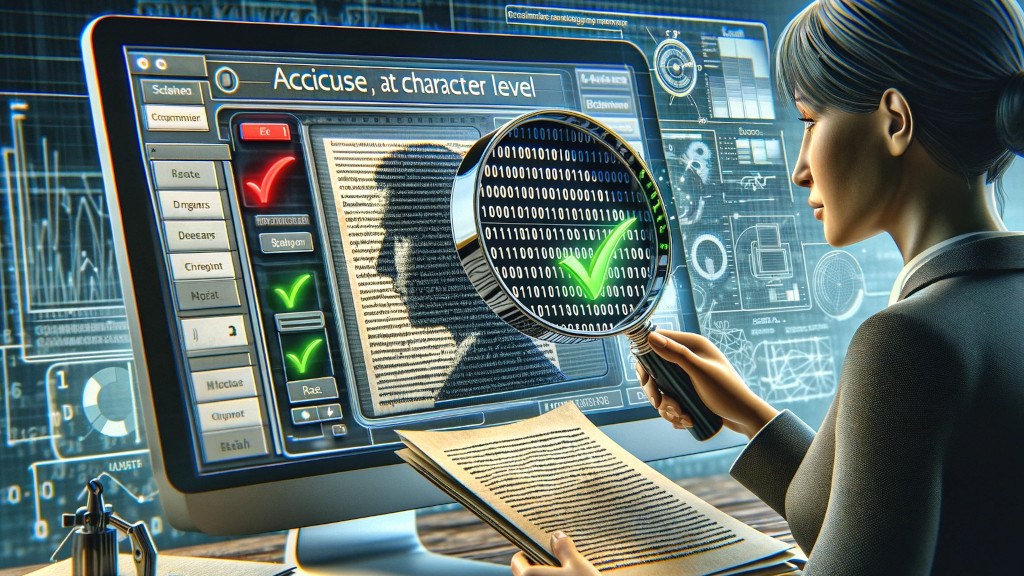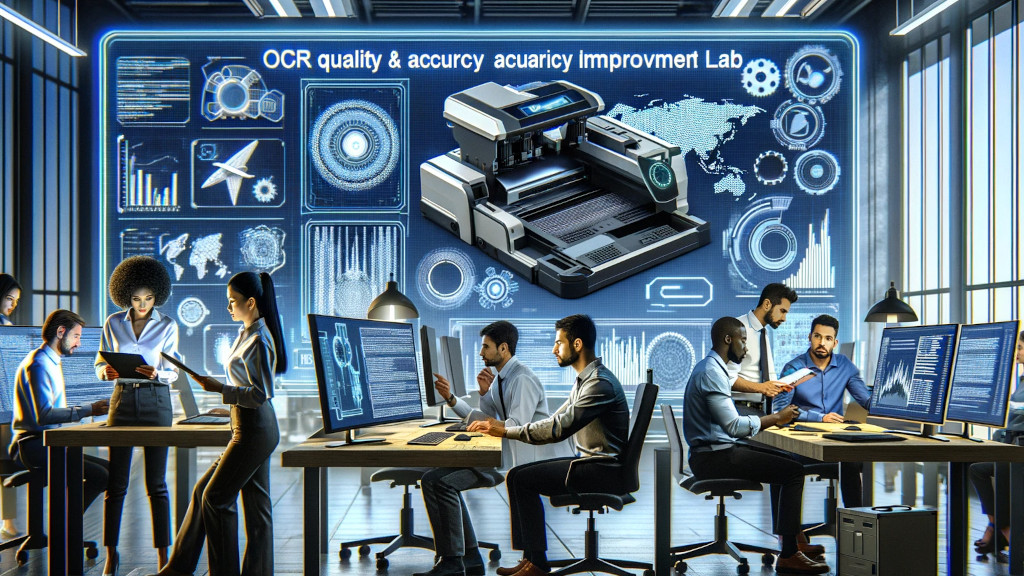In today’s digital era, data overrides everything. That said, businesses constantly need accurate data to ensure they make informed decisions. Regardless of the source – social media, databases, or websites -, there’s the emphasis on accurate data, clearly formatted. Technology offers the solution – Optical Character Recognition (OCR).
Statista research suggests that the Optical Character Recognition (OCR) market size, valued at 10.62 billion USD in 2022, is expected to grow at a CAGR of 14.8% from 2023 to 2030.
Intelligent Character Recognition (ICR), known as Intelligent OCR, is another technology that extracts handwritten text from images. Well, in any case, OCR appsTop 5 Mobile Apps To Do OCR In Your Phone lets you address the challenges. The million-dollar question is, how do you ensure your accuracy?
Read on to delve into what OCR accuracy is, the best practices to improve it, the benefits of improving it, and more.
What is OCR Accuracy?
In simple terminology, OCR accuracy is the process of comparing the outcome of the OCR software with its true version. There are two levels of determining it:
Accuracy at Character Level

This is to ascertain how often a character is identified correctly and how often incorrectly. In most cases, the accuracy pertains to this category. The more times a character is correctly identified, the more accurate is the OCR software.
For example, if in a document of 100 characters, the OCR engine identified 96 characters correctly, its OCR accuracy is 96%.
Accuracy at the Word Level
OCR engines use an additional dictionary so that a word identified can be associated with a similar word in its dictionary. However, this doesn’t imply that OCR has spotted the word right.
This is what makes it imperative to use the best quality images. Check out the best practices for obtaining an improved level of accuracy.
Best Practices to Improve OCR Accuracy
Follow the below practices, and you will successfully enhance the accuracy.
Always Check the Quality of the Source Image
As the vital role of OCR is to convert the images of text into machine-readable text, it’s imperative that the images used are clear and sharp. Unless the image in question exhibits high-quality standards, the resulting text cannot be assured of being error-free. In particular, the borders, characters, and any alignments on the image must be clear, and the image itself must not be shoddy or hazy.
So, make sure that the image is:
- Clear and sharp
- Not shoddy or hazy
- Borders, characters, and alignments are clearly shown
Select the Appropriate OCR Software

OCR uses software known as OCR engine, which performs the fundamental task of turning the image of text into machine-readable text format. Various OCR engines are available, each with its unique features, advantages, and limitations. Most of them use the same algorithm.
Comparing the accuracy is not simple, as it depends on factors like the budget allocated and the way the OCR engine is used in your system.
The OCR engines are embedded with programs designed to recognize the text in the images. These programs in different OCR engines work at varying accuracy levels.
Ensure Your Image is of the Perfect Size
For best outcomes, the OCR engines must read images that are of high quality and excellent resolution. Ensure that the image is of the right size, usually one-tenth of the original (1.5mm x 1mm) size. Adhering to these specifications will enable the OCR engines to extract the appropriate text from the images fed.
Eliminate Noise, if any
Similar to human eyes, OCR engines also can’t read the images properly in case of any noise. In case the image has any background or other noise, make sure to eliminate it completely for best quality results.
Focus on Keeping the Best Contrast
Black text on a white background looks perfect! However, light-gray content on the same white background causes difficulty to the eyes. Likewise, even OCR engines need the appropriate color contrast between the text and the background. Use the optimum level of contrast in your image to ensure it’s processed well and produces the desired outcomes.
Use Databases, Filters, and Such Tools
It’s essential that the extracted information is relevant and free of any errors. A best practice is to use appropriate language filters, Thesaurus, and databases to make the resulting text error-free.
Deskewing the Original Image
Papers can be read properly only if they are placed. The image should be placed so that the resulting text is horizontal. To achieve this, make sure you deskew the pages in the pre-processing phase. You can tilt the image slightly, then clockwise, counter-clockwise, and finally turn it back to the other side.
Benefits of Improving OCR Accuracy

Less Possibility of Errors
The primary function of Optical Character Recognition (OCR) is to extract text from images. This is a key operation that you perform in your day-to-day activities on your mobiles. Optimum accuracy certainly ensures that the images are perfectly converted to text without any errors. The absence of errors brings better results, causing less frustration.
Enhanced Searchability
With increased accuracy, the images are perfectly converted to text, and this makes their indexing and searchability better. As the images can be searched effectively, it becomes easier to locate them. Consequently, whether you are trying to search for a specific document or finding some information in a large body of text, you will get quicker results.
Increased Accessibility
A higher degree of accuracy also results in better accessibility. When images are accurately converted to text, they find better applications. For example, they can be read loudly by screen-reading tools or even used by people suffering from visual impairments. This makes it possible to use the data by anyone, irrespective of whether they can see the images.
In short, the benefits include:
- Excellent text results
- Increased searchability
- Better accessibility
- Applications in screen-reading tools or visually impaired persons
How to Get Started With Improving OCR Accuracy?
If you are focusing on improving accuracy, you could get started with a few basic steps.
- Check the version of the software; often, newer versions are released, and make sure you stay updated.
- Check the settings in your software. You may find options to increase resolution or contrast levels.
- Use a high-quality scanner so that you ensure that your images are of the best quality.
Wrapping Up
While scanning images and converting them into understandable text certainly is a great technological advancement, you need to ensure OCR accuracy to achieve the expected outcomes. Proper text recognition software, the use of high-resolution images, and the right kind of OCR engine can go a long way in fetching you the best results.
Follow the practices outlined in the article to reap the benefits of intelligent character recognition.
